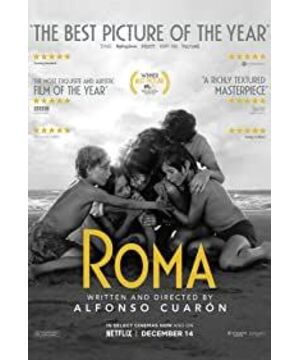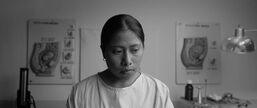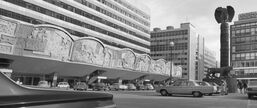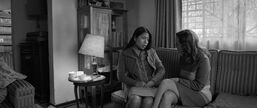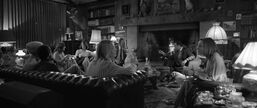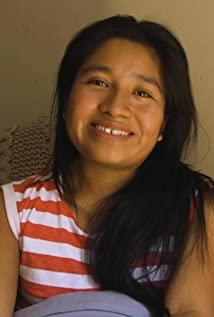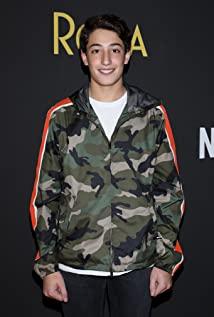1 Opening: Dry - Image and Wet - Image
The opening of "Roma" is stunning: in a "steep" perspective, the dry, dusty floor is a gaze straight into reality, and the symmetrical pattern suggests a most fundamental artificial aesthetic: truth as repressed deep Hidden beneath appearances, it is difficult to pry and pierce. But the sounds of birds, footsteps, echoes, the crash of buckets, and the pouring of water add a new motive to this eternal and futile "work": these sound waves collide in all directions on the plane of the "gazing", sending the infinite Thinking pulls back into the three-dimensional space and generates a certain speed: after the water pours, the tide begins to wash, like wiping a crystal, the dry particles disintegrate in the water, and the image begins to regain its luster.
It is in the intertwined expectations, the speed of drastic change, and the impact of the force that we witness a certain magical transformation, and finally, from the resulting clear and transparent texture, capture the multiple dimensions and possibilities of the image: accompanied by light. The addition (due to the addition of water as another medium of light) makes the new, wet image a reflection of the sky - here the pattern of the floor is still repeated as the most basic element of reality, but it is placed in the background ; As the existence of difference, the reflection occupies the center of vision, expands the field that can be reached by eyes, and attracts the roaring and gliding of flying machines, causing cracks in the originally closed three-dimensional space, and begins to expand, spread and move, forming a wider space. A purely audiovisual situation in space.
Only in this view can the speed of the floor scrub be understood as a foreshadowing force, can the impurity be polished, can the reflection be the key to unlocking the sky from the floor - from the low gaze that confronts reality, to the enlarged view A bird's-eye view of the heights of the domain; even if the truth of history has not been (or still cannot be) revealed, the levels and perspectives are different.
Here we should also note that there are two different image textures, dry and wet, behind this opening. Dry-images are static, isolated images that hide a real mystery with their solidity and depth, as in Bresson's close-up of a film model: in gazing at those faces, all we can do is subtract, It was as if immersed in an evaporation—the excess of things evaporated, leaving only the mystery. Even the sound is a distraction here, as the barking of Roma often breaks our immersion, because the flow of these sounds has become a resistance to the gaze.
On the other hand, the wet-image is full of dynamic and relational images (groups), which always lead our eyes from one place to another by the law of connection or movement such as the law of similarity or the law of contact. That is to say, the "gazing" that takes place in the dry-image becomes here "looking around"; the mystique of the individual, the concrete is diluted in the universality of the interconnectedness, evaporation becomes rain, subtraction becomes addition, Things are subject to the control of motion and macro logic.
2 Camera - Wave Trail
Perhaps the most fascinating and controversial part of Roma is its camera movement patterns. Taking the wave as an analogy, we believe that this movement is exactly the trajectory of the movement of the wave: it consists of two parts - the boundary from the sea and the boundary from the beach. These two boundaries are wet at one end and dry at the other; the two differ in a rhythmic reciprocating movement - repetitive modeling, that is: flushing or updating.
For example, in "Roma", Cleo's opening paragraph from downstairs to upstairs cleaning the room and the subsequent paragraph from upstairs to downstairs to turn off the lights constitute a local meaningful repetition-difference contrast: the movement of the camera follows the "prejudgment- --Following --Stagnation" mechanism, always arrive first, follow after staring, stare again after following (especially looking around), forming a dry-moist-and-dry image rhythm or even a program, As if the waves were hitting the beach; and behind the logic of this program is the principle of repetition: repetition, here in a Kierkegaardian sense, is the future and expectation in the eyes of the fatalist, a certain kind of The repeated experience of the law is the observation of historical consciousness. It is this repeated logic that makes the camera both stare and look around, and become the prophet, narrator and summary of the story, thus bringing a certain ambiguity and self-talk. Self-talking temperament.
Differences, on the other hand, are rooted in different contextual elements of repetition. In fact, even the exact same repetition would be a complete difference, similar to Eisenstein's montage in this regard. For example, the quarrel between the hostess and the hostess in the passage of going downstairs to turn off the lights establishes a divisive situation, in which, with Cleo's look around, has been washed from "ordering" in the morning to "separating", which is exactly the movement of the waves Repetition - The situational update brought about by the difference.
In fact, this model is similar to Deleuze's so-called "situation-action-new situation" structure, because the movement of the ocean waves is exactly the movement of repeated washing and updating. It is the driving force that leads the development of the movement.
For example, in another passage about street bloodshed, the big scene of rioting, as the big picture of the whole incident, seems to be swept away by the stare of the window; but the camera has already been calmly aimed at the door of the store like a moving wave, " "Leading" the intruding group of people to kill the man hiding in the wardrobe; after this series of actions, there is a low tide, it is the mutual gaze of cleo and Fermin, revealing a scarred plane, where life is impacted , washed and finally collapsed. Here, a series of mechanical chain reactions are taking place: both the victim and the victim, as part of the violent machine, are pulled to carry out the assembly-line death production and tragic repetition under the pre-judgment of the camera; After the reaction of the violent machine is over, the "abortion of love" generated by it pushes people to combine with the car and the hospital machine, trying to carry out some kind of powerless healing and recovery.
3 Tension: An update to reflections
Reflection, as a special existence, has been a key to opening "Rome" from the very beginning. From the city to the countryside, from the maid to the hostess, the repetition of certain elements seems to be a pond of stars, involving various characters and even the entire Roman district; only in this way can their reflections be superimposed and similar to each other, The camera can continue to wash, wash and renew it like the waves of the ocean - the renewal here has the meaning of unbundling and growth: if cleo finally said "I didn't want her" on the beach, this seems to be her opinion on miscarriage. —The machine, the revolt of the history/violence/power machine; even if it was too late, it brought about real relief: the return car through the dry Gobi, they stared out of the window, also at the ebb of the waves - no Then there are the drowning people, who will go ashore to their brand new homes after they have been washed away.
But in the previous life legend of the drowned sailor of the little boy, there is a certain "reflection-image" crisis: the logic of history makes everything not only governed by rules, even the camera captures only some "reflections" ”, the entire Roman area is just a memory, regular and tamed Roman area, and the characters are nothing but real fragments, secondary existences as reflections.
This means that "reflection" is not a new creation, but a constructed language and a paste of power; it needs to be dried, freed from flow like the ebb of an ocean wave, and instead hammered through and stared at reality to Complete the reflection and deconstruction of oneself - as the little boy space legend shows: this gaze comes from a certain space perspective in the cinema in "Roma", only in the absolute distance of space, this blue Mercury can The planet, which is truly gazed upon as a whole, can only grasp the power of the rules of production, and is also guided by rotation, advancement, and deeper truth.
In fact, the truly fascinating moment of Roma is neither in the flowing reflection nor in the still gaze, but in the moment when the dry and wet images begin to alternate: tension and speed burst, extend, spread from this crack , which ultimately becomes the power of renewal; it is this tension that develops and communicates the two different situations, which transcends the logic of authority and opens up the gaps for the individualized gaze to become a real bond. Like at the end, the camera, which is finally raised, is aimed not so much at the sky behind the cleo as at the revolving staircase: it escapes and grows from its reflection, marked as a climbing and descending entity, symbolizing the A model of tension that leads us upward.
View more about Roma reviews


